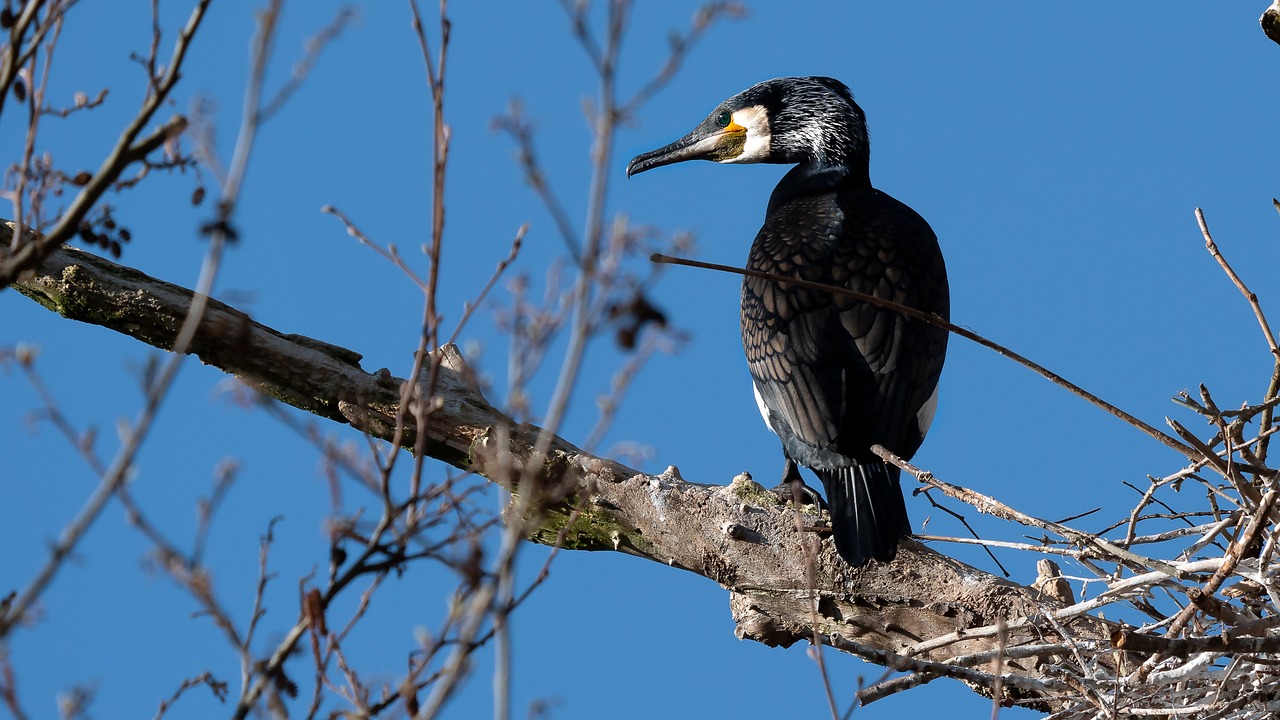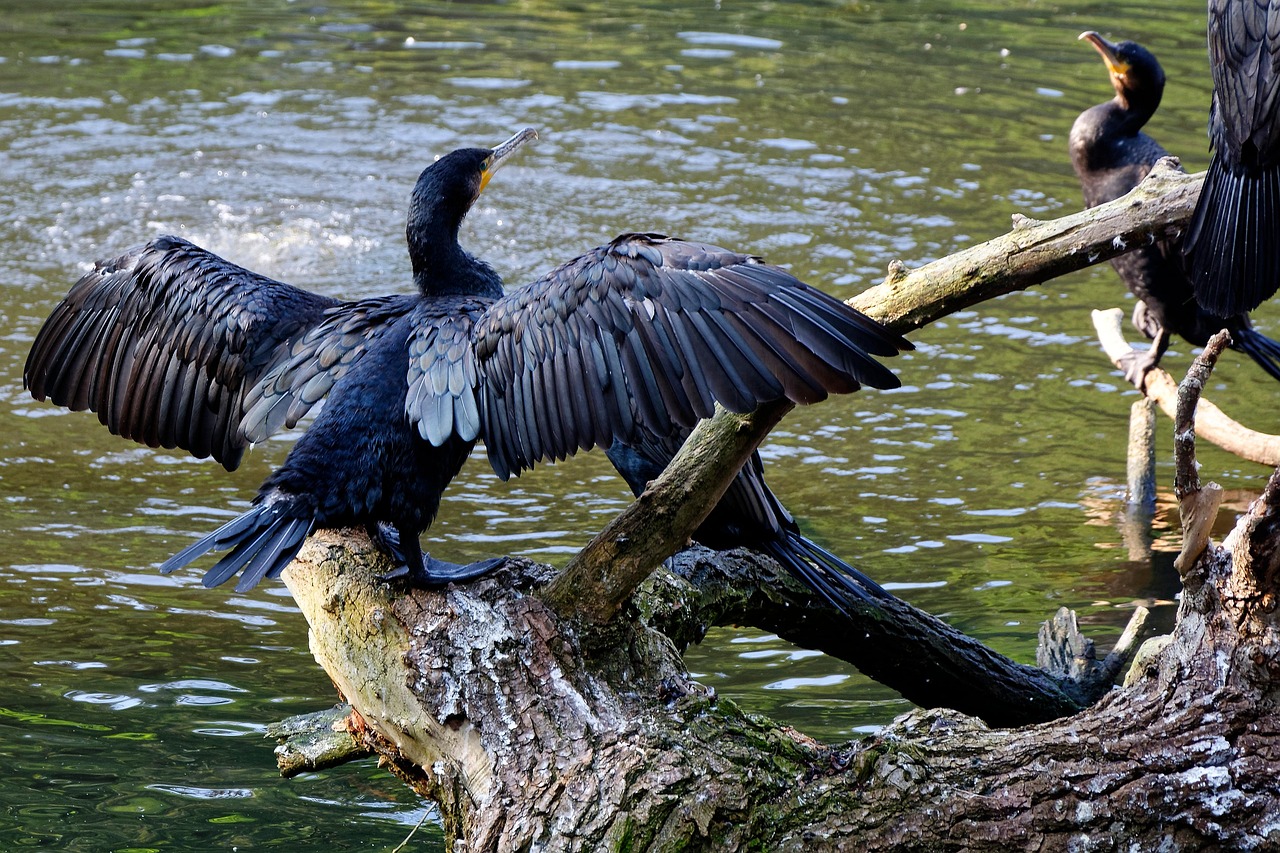Great Cormorant (Storskarv)


Characteristics:
The Great Cormorant is a large, dark waterbird (length 80–100 cm) with a long neck, heavy body, and a hooked bill designed for catching fish.
The plumage is black with a greenish or bluish sheen, and during the breeding season, adults show white patches on the thighs and around the face.
Juveniles are brownish-grey with a paler underside.
It is easily recognised when it sits on rocks or posts with wings spread to dry, a typical cormorant behaviour.
Habitat:
The Great Cormorant is found along the entire Swedish coastline and in large inland lakes, such as Mälaren, Vänern, and Vättern, as well as throughout the Baltic archipelagos. It nests in colonies on rocks, small islands, or in trees.
Behaviour:
The cormorant is a skilled underwater hunter, capable of diving to depths of up to 20 meters.
After fishing, it is often seen drying its wings because its feathers are not fully waterproof. It hunts both alone and in groups and can catch several fish in a single dive.
Diet:
The Great Cormorant feeds almost exclusively on fish, mainly perch, roach, herring, and cod. It can handle fish up to 30 cm long.
Reproduction:
Breeding takes place in April–May. The nest, built from twigs and seaweed, is placed in colonies that can number hundreds of pairs. The female lays 3–4 eggs, which are incubated for 25–30 days. Both parents care for the chicks, which fledge after 6–7 weeks.
Migration:
The Great Cormorant is partially migratory. Many birds overwinter in southern Sweden, particularly along the Öresund, Skåne, and west coast, while northern populations migrate to western Europe.
Distribution:
The species occurs across Europe, Asia, and North Africa. In Sweden, the population has increased dramatically since the 1980s and is now estimated at over 40,000 breeding pairs.
Hunting and management:
The Great Cormorant is not a general game species, but protective hunting (control shooting) is permitted under license from the County Administrative Board to reduce damage to fisheries and fish stocks.
Hunting usually takes place near fishing areas or breeding colonies.
Firearm class (Sweden):
Protective hunting is carried out with a shotgun, typically using pellet size no. 3–5.
Think for the hunting exam:
- Large, dark bird with long neck and hooked bill.
- Recognised by spreading wings to dry after diving.
- Feeds almost entirely on fish.
- Breeds in colonies along coasts and lakes.
- Subject to protective hunting only with shotgun.
- Important ecological predator but can cause conflicts with fisheries.
